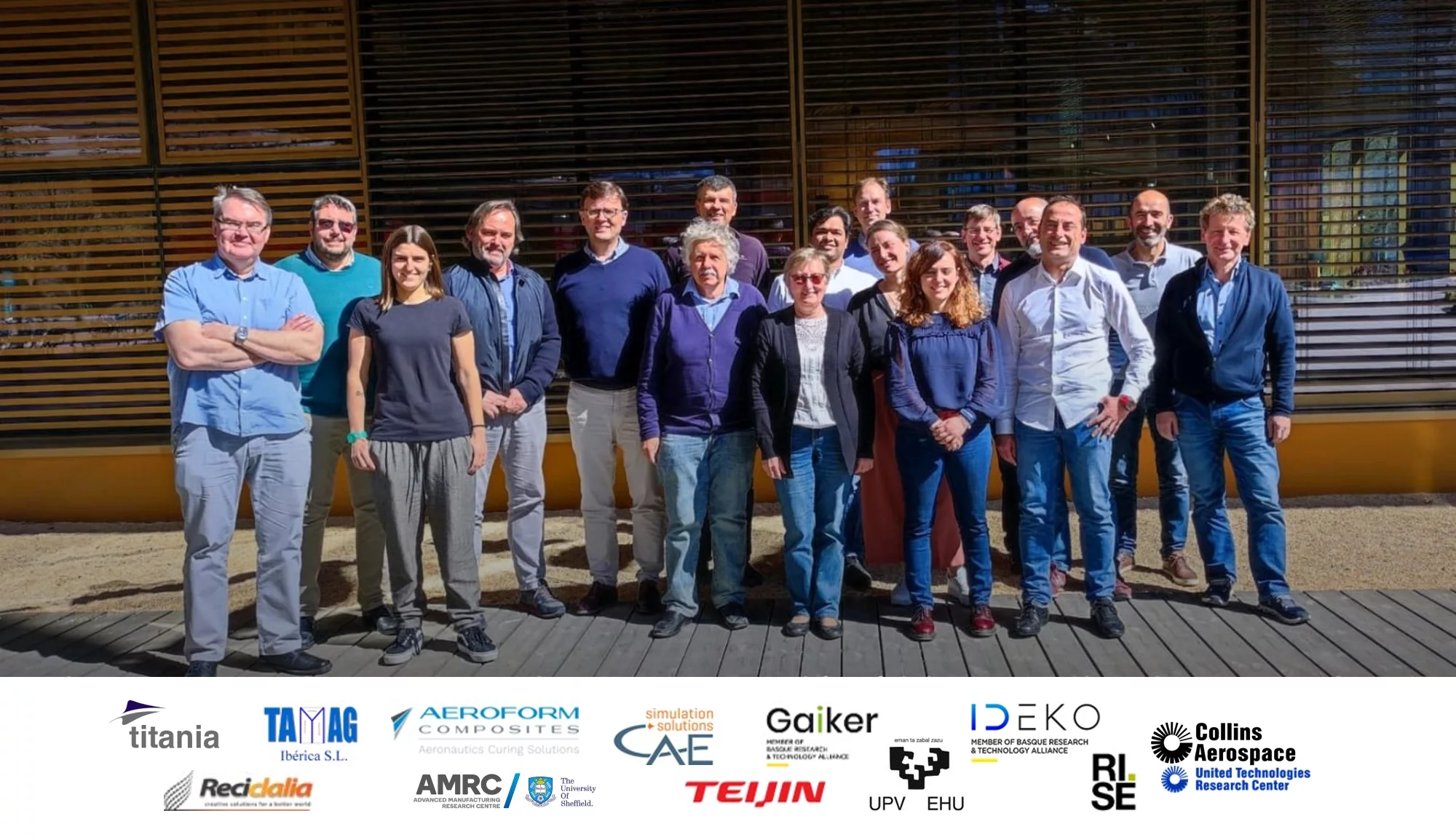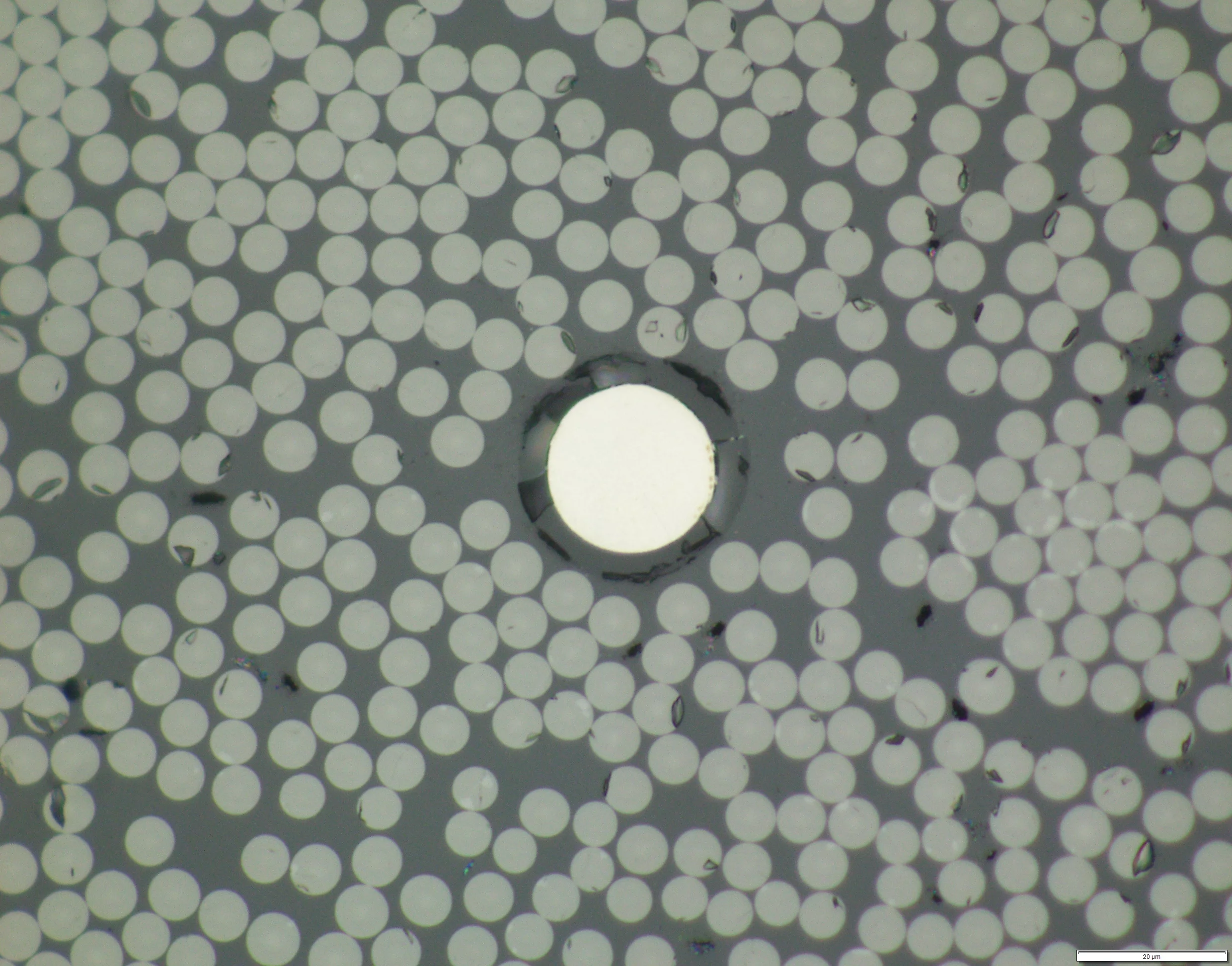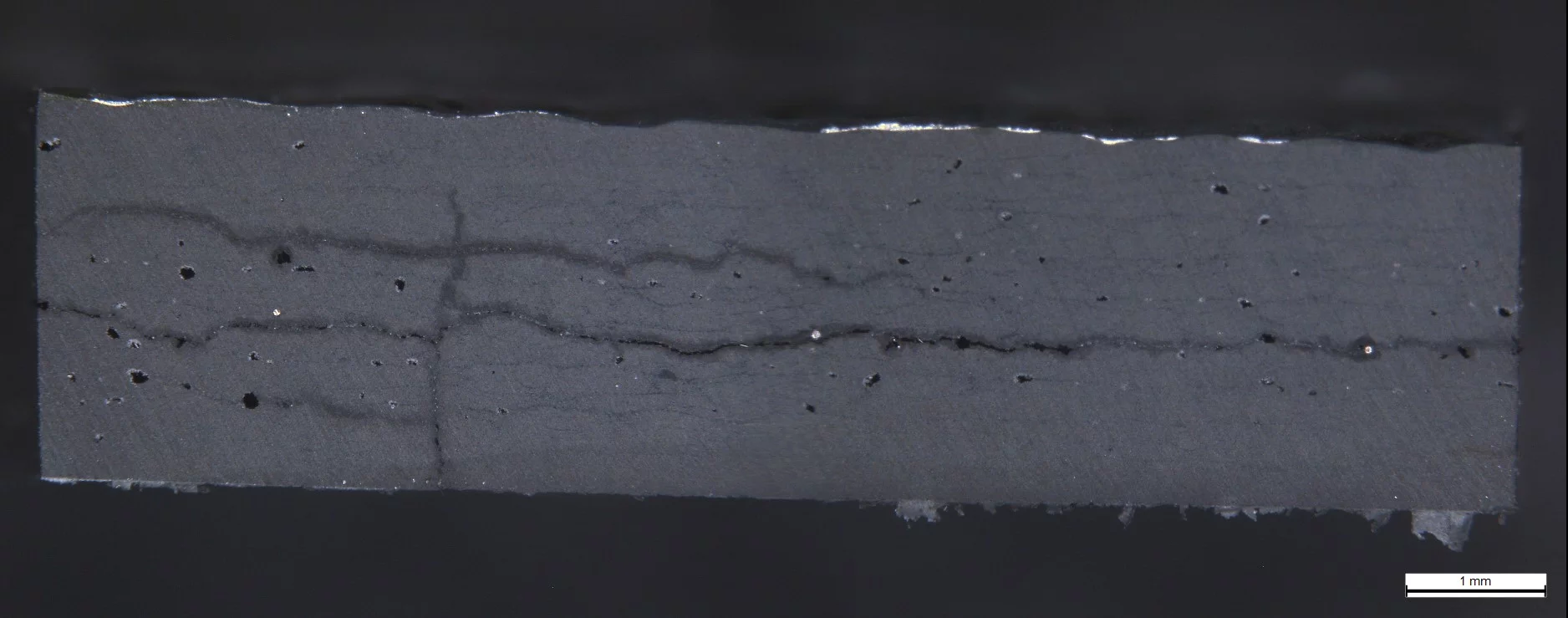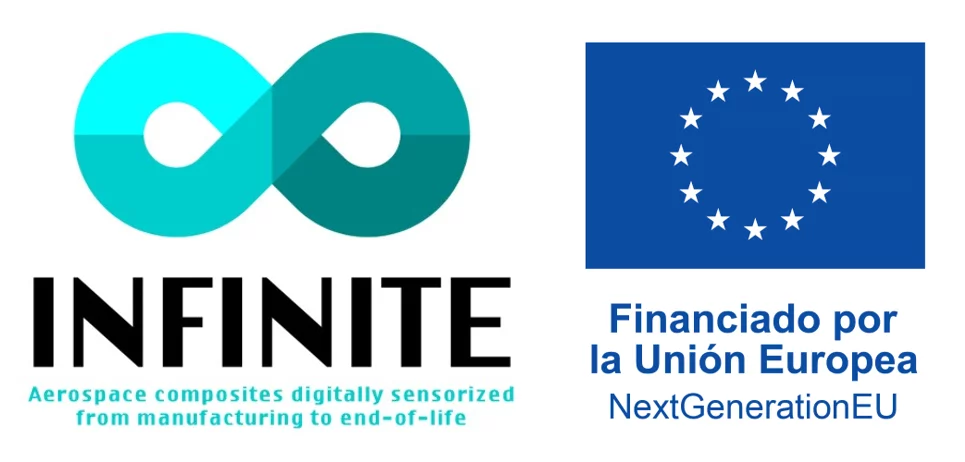
Last 19th and 20th April in RISE (Gothenburg, Sweden), Pedro Astola (R&D+i Manager) and Marta Botana (R&D+i Technician) attended the INFINITE Project General Committee meeting to present the progress made during the last quarter. The Committee meets quarterly and in person with all the member entities of the consortium in order to follow up the project’s progress.
In the last quarter, Titania carried out a first approach to the manufacture of sensorised composite material with magnetic microwires. Thus, the first CFRP laminates were manufactured from oven-cured unidirectional tape prepregs. The innovation in these fabrications was the inclusion of magnetic microwires with a thicknesses of between 28 µm and 44 µm in the centre of the laminate.
Another task that Titania successfully carried out was the microscopic characterisation of the microwires embedded in the CFRP laminate. Thanks to the capabilities of its Microscopy laboratory, Titania was the only company in the consortium able to identify the two components of these microwires: the metallic core and the glass coating.

In addition, the effect of the thickness of the microwire on the quality of the laminate was evaluated. For this purpose, interlaminar shear strength tests were carried out in the Mechanics laboratory. Specimens without microwires and specimens with 28 and 44 µm microwires were tested. Numerical results showed no significant differences between the three cases studied. However, the analysis of the failure modes showed that the larger the embedded microwire, the greater the number and size of cracks observed.
Finally, Titania presented the final test plan to be carried out in order to evaluate the influence of the microwires on NCF laminates. This plan includes mechanical tests, physico-chemical tests and microscopy. A total of 300 panels will be manufactured and tested in our facilities.

With a view to the project’s next General Committee meeting, Titania will start manufacturing NCF panels with embedded microwires. In this area, the influence of the relative orientation of these microwires with respect to the 0° direction of the NCF as well as the influence of the position of the microwires in the laminate will be studied.


